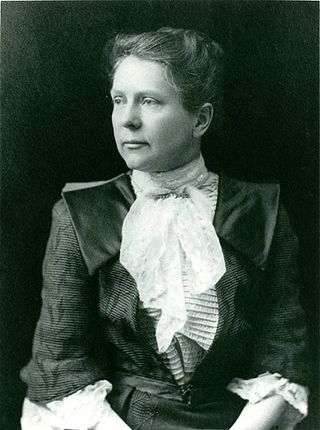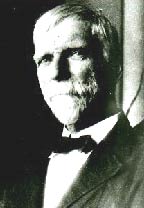
Phlox is a genus of 68 species of perennial and annual plants in the family Polemoniaceae. They are found mostly in North America in diverse habitats from alpine tundra to open woodland and prairie. Some flower in spring, others in summer and fall. Flowers may be pale blue, violet, pink, bright red, or white. Many are fragrant.

Panicum (panicgrass) is a large genus of about 450 species of Poaceae grasses native throughout the tropical regions of the world, with a few species extending into the northern temperate zone. They are often large, annual or perennial grasses, growing to 1–3 m (3–10 ft) tall.

Symphyotrichum is a genus of over 100 species and naturally occurring hybrids of herbaceous annual and perennial plants in the composite family, Asteraceae, most which were formerly treated within the genus Aster. The majority are endemic to North America, but several also occur in the West Indies, Central and South America, as well as in eastern Eurasia. Several species have been introduced to Europe as garden specimens, most notably New England aster and New York aster.

Bryology is the branch of botany concerned with the scientific study of bryophytes. Bryologists are people who have an active interest in observing, recording, classifying or researching bryophytes. The field is often studied along with lichenology due to the similar appearance and ecological niche of the two organisms, even though bryophytes and lichens are not classified in the same kingdom.

The Funariidae are a widespread group of mosses in class Bryopsida. The majority of species belong to the genera Funaria and Physcomitrium.
Andreaeobryum, the Mossy Cowl Moss, is a genus of moss with a single species Andreaeobryum macrosporum, endemic to Alaska and western Canada. The genus is placed as a separate family, order and class among the mosses.

Tetraphidaceae is a family of mosses. It includes only the two genera Tetraphis and Tetrodontium, each with two species. The defining feature of the family is the 4-toothed peristome.

Encalyptaceae is a family of mosses in order Encalyptales. It includes two genera; the genus Bryobartramia, formerly included in the family, is now placed in its own family.

The American Bryological and Lichenological Society is an organization devoted to the scientific study of all aspects of the biology of bryophytes and lichen-forming fungi and is one of the nation's oldest botanical organizations. It was originally known as the Sullivant Moss Society, named after William Starling Sullivant. The Society publishes a quarterly journal distributed worldwide, The Bryologist, which includes articles on all aspects of the biology of mosses, hornworts, liverworts and lichens. The Society also publishes the quarterly journal Evansia, which is intended for both amateurs and professionals in bryology and lichenology and is focused on North America.
Bruchiaceae is a family of haplolepideous mosses (Dicranidae) in the order Dicranales. They have the greatest occurrence in temperate regions. They are mosses with long-necked, cleistocarpous capsules and mitrate calyptras.

Elizabeth Gertrude Britton was an American botanist, bryologist, and educator. She and her husband, Nathaniel Lord Britton, played a significant role in the fundraising and creation of the New York Botanical Garden. She was a co-founder of the predecessor of the American Bryological and Lichenological Society. She was an activist for the protection of wildflowers, inspiring local chapter activities and the passage of legislation. Elizabeth Britton made major contributions to the literature of mosses, publishing 170 papers in that field.

Encalypta is a genus of moss in the family Encalyptaceae; commonly known as "extinguisher moss". It includes 34 species and is broadly distributed across the continents of America, Europe, Asia, Africa and Australia, as well as Madagascar and New Zealand. The name is derived from the Greek en, meaning in, and kalyptos, which means to cover, veil or lid.
Elsa Cecilia Nyholm (1911–2002) was a Swedish botanist, in particular bryologist, and researcher at Lund University and the Swedish Museum of Natural History.

Anna Murray Vail was an American botanist and the first librarian of the New York Botanical Garden. She was a student and collaborator of botanist and geologist Nathaniel Lord Britton, with whom she helped to found the New York Botanical Garden.

Abel Joel Grout (1867–1947) was an American bryologist, an expert on pleurocarpous mosses, and founding member of the Sullivant Moss Society.

Limnichidae, commonly called minute marsh-loving beetles, is a family of beetles belonging to Byrrhoidea. There are at least 30 genera and 350 described species in Limnichidae. They are found worldwide, with the greatest diversity in tropical regions. Most species seem to be associated with water-adjacent habitats, such as riparian and coastal locations, though many species are likely fully terrestrial, with some species being associated with leaf litter and arboreal habitats. Species with known diets feed on moss or algae. The oldest fossils of the family are known from mid-Cretaceous Burmese amber from Myanmar.
Dendropogonella is a genus of mosses (Bryophyta) with only one known species, Dendropogonella rufescens. It is found in South America.

Margaret Sibella Brown was a Canadian bryologist specializing in mosses and liverworts native to Nova Scotia. Although lacking formal scientific training, she has been recognized for her contributions to bryology and as an authority on the mosses and liverworts of Nova Scotia. Samples she collected are now housed at major herbaria in North America and Europe.

Robert Statham Williams was an American bryologist who specialized in the mosses of the Yukon and South America. The standard author abbreviation R.S.Williams is used to indicate this person as the author when citing a botanical name.
Albert LeRoy Andrews (1878–1961) was a professor of Germanic philology and an avocational bryologist, known as "one of the world’s foremost bryologists and the American authority on Sphagnaceae." From 1922 to 1923 he was the president of the Sullivant Moss Society, renamed in 1970 the American Bryological and Lichenological Society.














